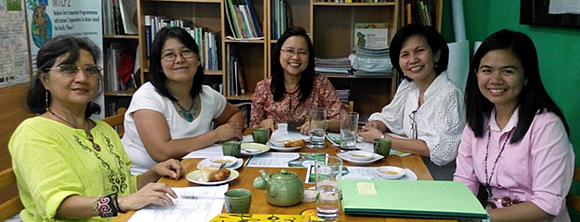Sustainability and Poverty Reduction

Resilience and equity are directly served by conscious efforts to ensure sustainability in agricultural production systems and to reduce rural poverty in its multiple dimensions. Sustainable agricultural practices, including organic farming, sloping agricultural land technologies, systems of rice intensification and others have found increasing albeit still limited following in countries in the region. Practitioners attest that sustainability need not imply lower productivity, even as certain “hard-core” scientists are prone to question the potential contribution (or lack thereof) to food security that sustainable agriculture, especially organic farming, could make. Meanwhile, population pressures in the lowlands have driven more and more agricultural activities to the uplands, whether subsistence or commercial, leading to serious questions regarding tradeoffs between production and environmental integrity. Sustainable upland agriculture is thus an important area of activity and body of knowledge, especially in places where the agricultural land frontier is closing up.
Poverty in its economic, social, environmental, cultural and political dimensions is rooted in lack of endowments in five forms of assets: financial, human, natural, physical and social capital. Interventions to reduce poverty fall under three modes: (1) those that expand the poor’s endowments of these various forms of capital, either by outright redistribution or by improving access to them, (2) those that increase the benefits (income or welfare) that they derive from these assets, and (3) those that enrich or protect these asset endowments. Included under the first mode are asset reform programs that address the poor’s access to natural capital such as farmlands (e.g., agrarian reform), fishery resources and ancestral domains. It also includes various initiatives to improve health and education (i.e., human capital); rural infrastructure such as energy, irrigation, farm to market roads, and communication facilities (physical capital); farm credit, microfinance and microenterprise initiatives (financial capital); and participatory mechanisms such as cooperatives and local development councils (social capital).
Under the second mode of increasing the benefits derived from the above assets are efforts to improve productivity through improved technology via expanded research and development (R&D) and extension efforts. Measures to assist farmers with improved access to inputs such as hybrid seeds, chemical or organic fertilizers, better pesticides and suitable farm machines likewise fulfill the same function. This may also be pursued through institutional interventions and market reforms to improve farm prices. These include fostering small and medium-scale processing of farm products, and measures to strengthen the various commodity value chains that link production to final consumption. Also contributing to this goal are macroeconomic measures that stabilize prices (i.e., reduce inflation), foreign exchange rates and interest rates.
Forward-looking measures characterize the third mode, of enriching and/or protecting endowments in the various forms of capital. Environmental protection measures such as forest and watershed protection and coastal resources management seek to enhance and preserve the natural capital. So do climate change adaptation measures, now a prominent concern at all levels of development planning, which would protect both natural and physical capital. Conditional cash transfer (CCT) programs induce the poor to invest in their human capital by rewarding them for keeping children in school and availing of health services, among others. Population management and disaster management efforts similarly pursue the same goal.


 Download Conference Summary Report
Download Conference Summary Report Download Book of Abstracts
Download Book of Abstracts
 Download Conference Flyer
Download Conference Flyer


